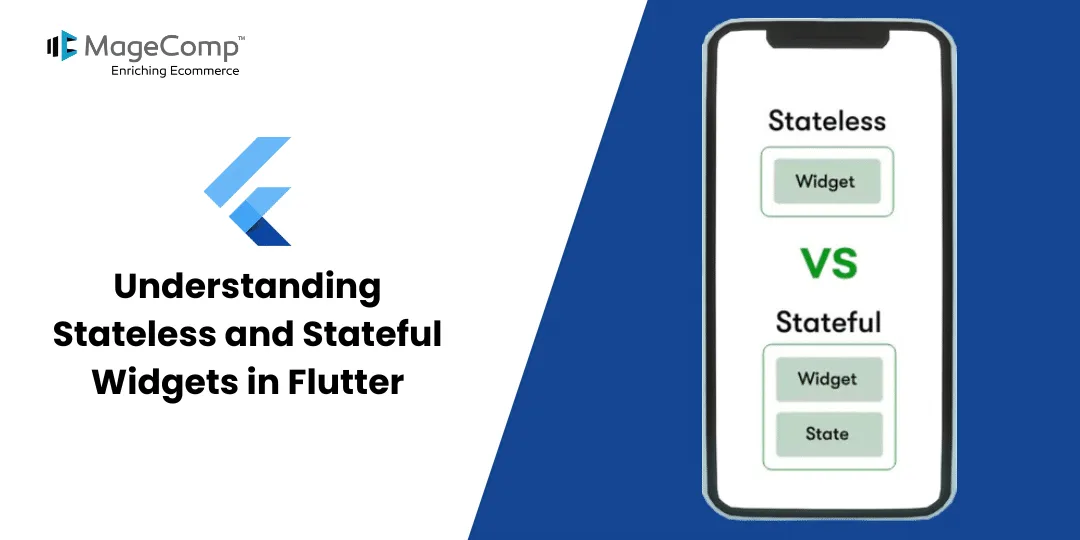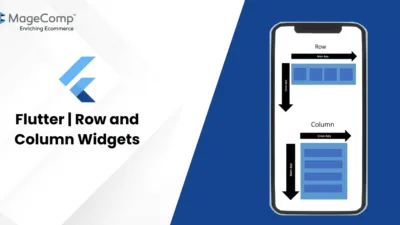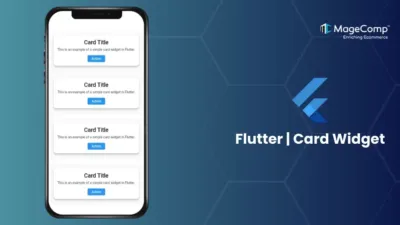Flutter is a powerful UI toolkit from Google that allows developers to build natively compiled applications for mobile, web, and desktop from a single codebase.
Learn more about Flutter
At the heart of Flutter are widgets, which are the building blocks of any Flutter application. In Flutter, everything is a widget, and they are categorized into two main types: Stateless Widgets and Stateful Widgets. Understanding the difference between these two types of widgets is crucial for building efficient and responsive Flutter applications.
Stateless Widgets
A Stateless Widget is a widget that does not hold any state. This means that the widget’s properties are immutable and cannot change during its lifecycle. Stateless widgets are ideal for displaying static content, such as text or images. This means these widgets are ideal for situations where the UI does not need to change dynamically in response to user interactions or other events.
Characteristics of Stateless Widgets:
- Immutability: Once created, the properties cannot be changed.
- No State Management: They do not manage any internal state.
- Rebuild on Parent Change: They rebuild only when their parent widget changes.
Benefits of Stateless Widgets:
- Simpler to code: Due to their immutable nature, stateless widgets require less code to implement.
- Faster performance: Stateless widgets are rebuilt efficiently, leading to smoother UI rendering.
- Easier to reason about: Their predictable behavior makes them easier to understand and maintain.
Use Cases for Stateless Widgets:
- Displaying text with Text widget
- Showcasing icons with Icon widget
- Creating buttons with RaisedButton widget
Example of Stateless Widgets:
import 'package:flutter/material.dart';
class GreetingWidget extends StatelessWidget {
@override
Widget build(BuildContext context) {
return Text('Hello, Flutter!', style: TextStyle(fontSize: 24));
}
}Stateful Widgets
A Stateful Widget is a widget that can change its state over time. This means that a Stateful Widget can rebuild itself when its state changes. They are suitable for scenarios where the UI needs to reflect changes based on user interactions, animations, or network responses. A stateful widget consists of two classes: the widget itself and a state class that holds the state. The state class is where you define the mutable state and the logic to manage it.
Characteristics of Stateful Widgets:
- Mutable State: They maintain an internal state that can change during the widget’s lifecycle.
- State Management: They manage their state using a separate class that extends state.
- Rebuild on State Change: They rebuild when their internal state changes.
Advantages of Stateful Widgets:
- Dynamic UI: They provide the power to create UIs that respond to user actions and data changes.
- Complex interactions: They are well-suited for handling intricate user interactions and state management.
Use Cases of Stateful Widgets:
- Building forms that capture user input
- Displaying data that updates in real-time
- Creating animations and interactive elements
Example of Stateful Widgets:
import 'package:flutter/material.dart';
class CounterWidget extends StatefulWidget {
@override
CounterWidgetState createState() => CounterWidgetState();
}
class _CounterWidgetState extends State<CounterWidget> {
int _counter = 0;
void _incrementCounter() {
setState(() {
_counter++;
});
}
@override
Widget build(BuildContext context) {
return Column(
mainAxisAlignment: MainAxisAlignment.center,
children: [
Text('Counter: $_counter', style: TextStyle(fontSize: 24)),
ElevatedButton(
onPressed: _incrementCounter,
child: Text('Increment'),
),
],
);
}
}
When to Use Stateless vs Stateful Widgets?
Deciding between stateless and stateful widgets depends on the needs of your application.
- Stateless Widgets: Use these when the part of the UI you are building does not depend on any mutable state. They are easier to understand and implement, and they offer better performance since they do not require state management.
- Stateful Widgets: Use these when your UI needs to update dynamically. Stateful widgets are essential when you need to manage any mutable state that affects the UI.
Conclusion:
By understanding the strengths and use cases of both stateless and stateful widgets, you can construct efficient, adaptable, and visually appealing user interfaces in your Flutter applications.






I just read your blog on Understanding Stateless and Stateful Widgets in Flutter—great insights! The clear breakdown of the differences between the two widget types was super helpful.